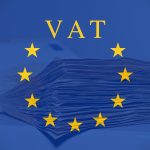The dream of homeownership is often associated with financial stability and security, yet recent economic shifts have resulted in a balancing act for many. Homeowners with low-rate fixed mortgages have been feeling very fortunate amid rising rates for new mortgages, but recent increases in less-discussed costs of ownership are catching them off guard.
Rising property taxes and homeowners’ insurance premiums present a mounting challenge to the financial health and decision-making strategies of homeowners. It’s important to for homeowners and prospective buyers alike to understand the implications in this environment.
Property Taxes
Since the pandemic, homeowners in the U.S. have seen a huge spike in real estate value, leading to a more than 25% increase in U.S. median single-family home property taxes since 2019, according to CoreLogic
CoreLogic
From 2019 to 2023, the median price for a single-family home in the U.S. saw a staggering rise of about 40%, as The New York Times
New York Times
CoreLogic’s data shows that in 2023, U.S. median property taxes for all properties reached $2,826, marking an increase of $539 from 2019, translating to a 23.6% rise over four years. This uptick is even more pronounced among reassessed properties, where median taxes climbed to $2,943, up by $612 or 26.3% since 2019.
All real estate is local, and in my area, multiple clients have been affected by the expiration of a popular New York City property tax abatement program in 2022. Details on timing vary, with buildings ranging from 10 – 25 years for expirations on when taxes will revert to full payment for buildings in the 421a program. The transition period from fully abated taxes to 100% can happen over several years.
Home Insurance
Skyrocketing home insurance costs are impacting homeowners nearly across the board, but they are particularly burdensome on seniors living on a fixed income. With the average annual premium now hovering around an unprecedented $2,511.25, per a MarketWatch guide, the financial fabric of household budgets is being stretched thinner.
And as we look ahead, the forecast remains grim, with projections indicating a further rise in premiums by a staggering 10% to 15%, according to insights from Money. This trend does not merely reflect the volatile dynamics within the housing and insurance sectors. It calls for homeowners to craft smart action plans to mitigate this growing financial strain, especially as inflation has been placing additional burdens on U.S. households.
Homeowners in coastal areas have an additional challenge of obtaining ANY property insurance, as insurance companies have pulled out of coastal areas and cancelled policies.
Another Headwind For the Real Estate Market?
Few buyers considered (or budgeted for) the possibility of a spike in these costs. In fact, mortgage qualification is typically based on the ratio of buyer’s income to PITI (Principal, Interest, Taxes and Insurance). Along with limited inventory, these rising costs are limiting eager buyers and stifling the real estate market. I wonder how many homeowners would have been considered qualified for their mortgage with the current combination of rates and direct (taxes and insurance) costs of ownership?
Homeowners are stuck between a rock and a hard place. While many saw their home appraisals surge post-pandemic, the financial benefit of fixed living expenses is no longer a given, and renters may actually have more stability in comparison. Whether you rent or own, it’s important to include all the costs of your home in your personal financial plan.
Read the full article here
















